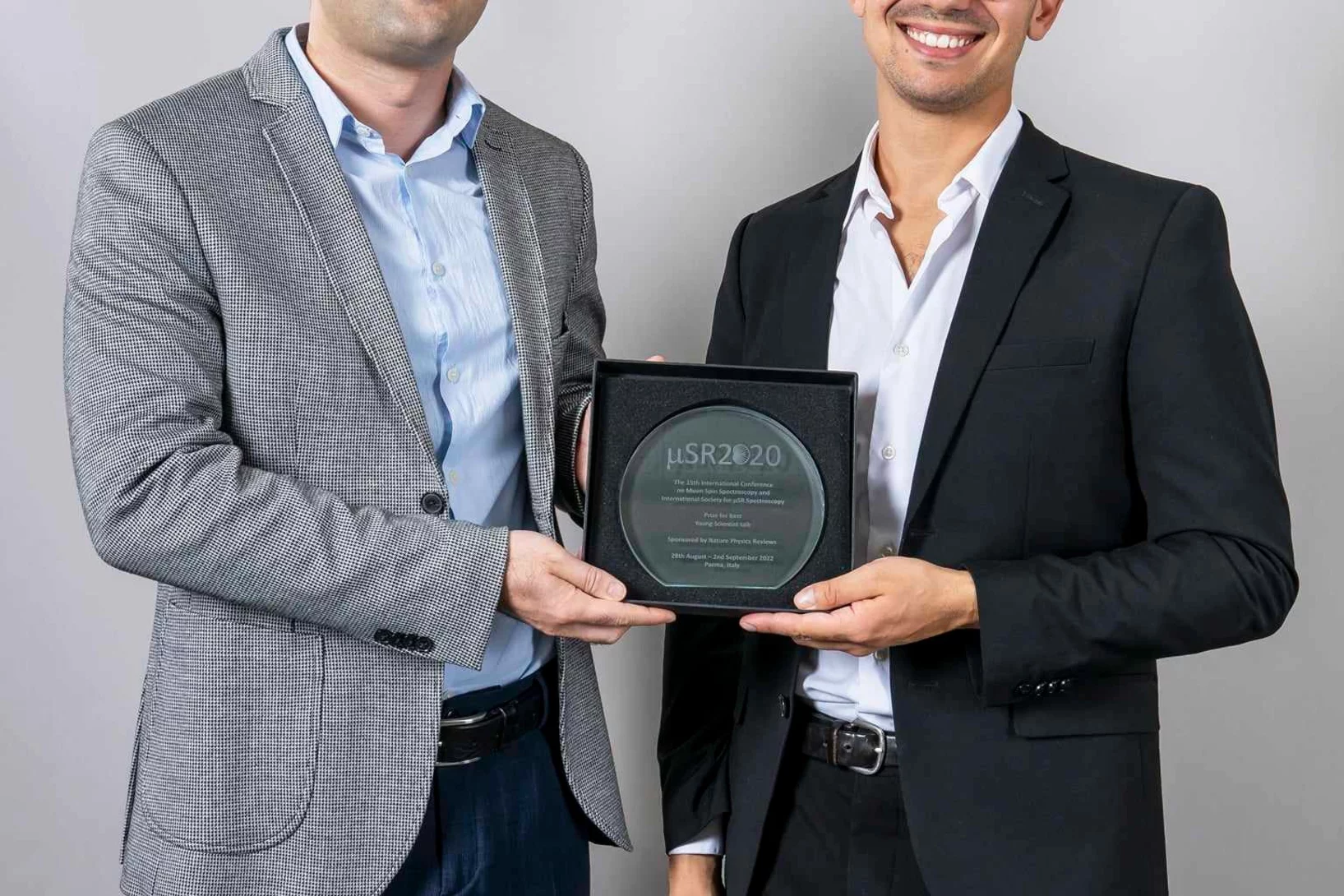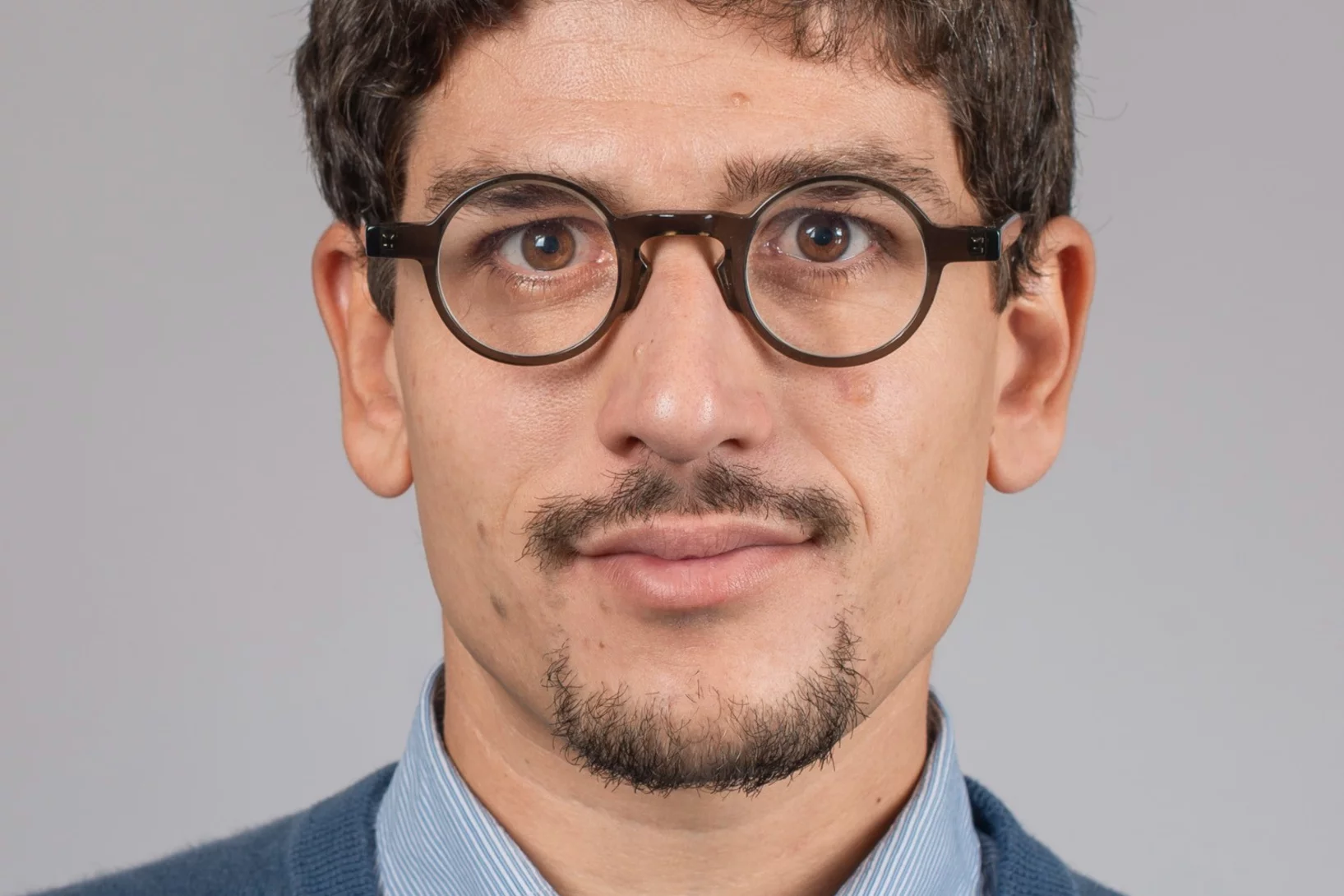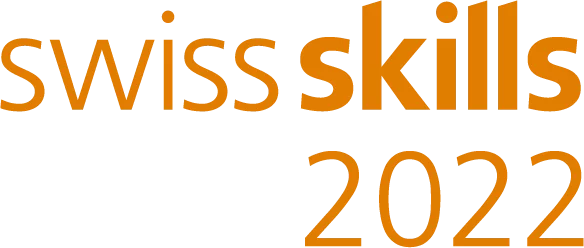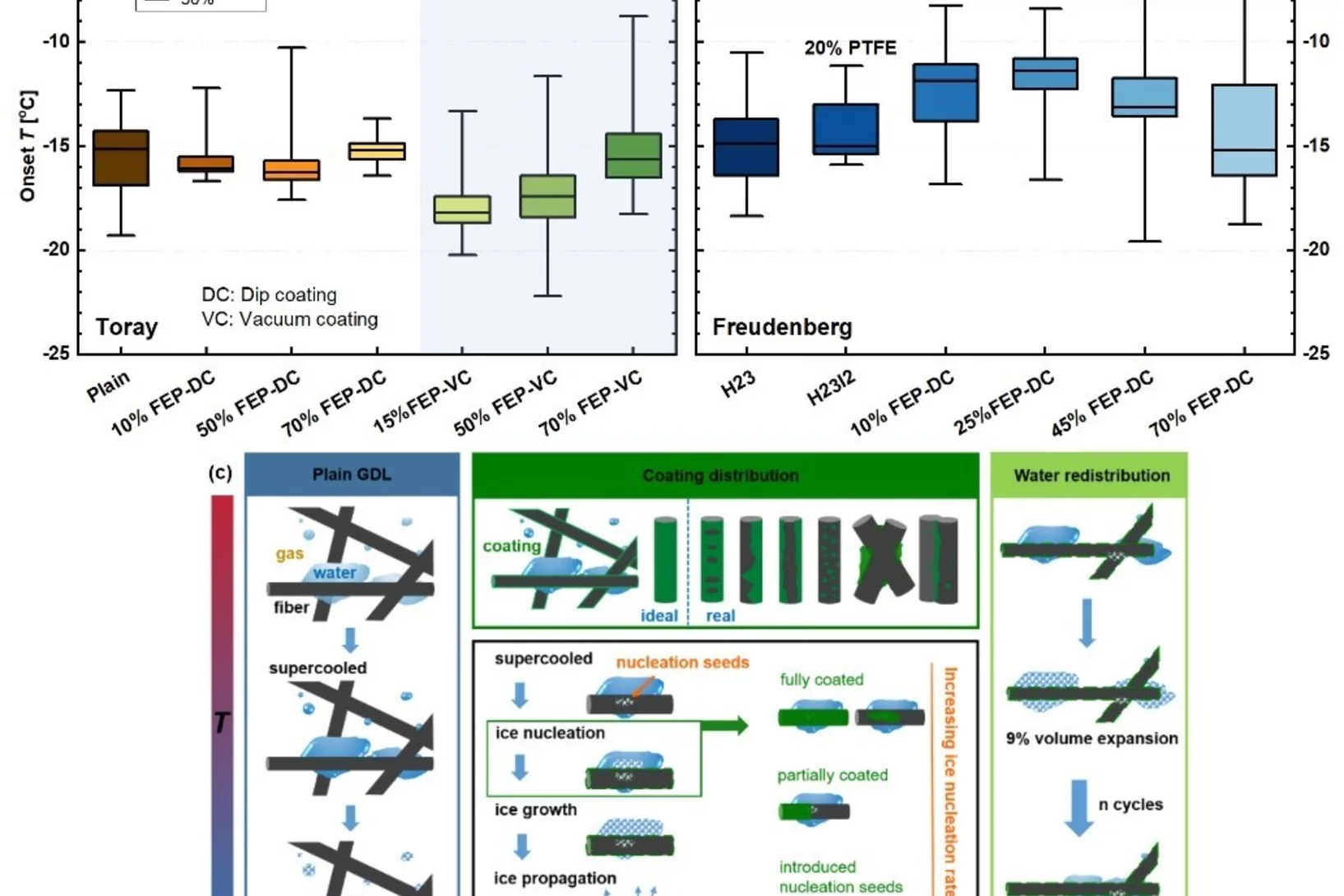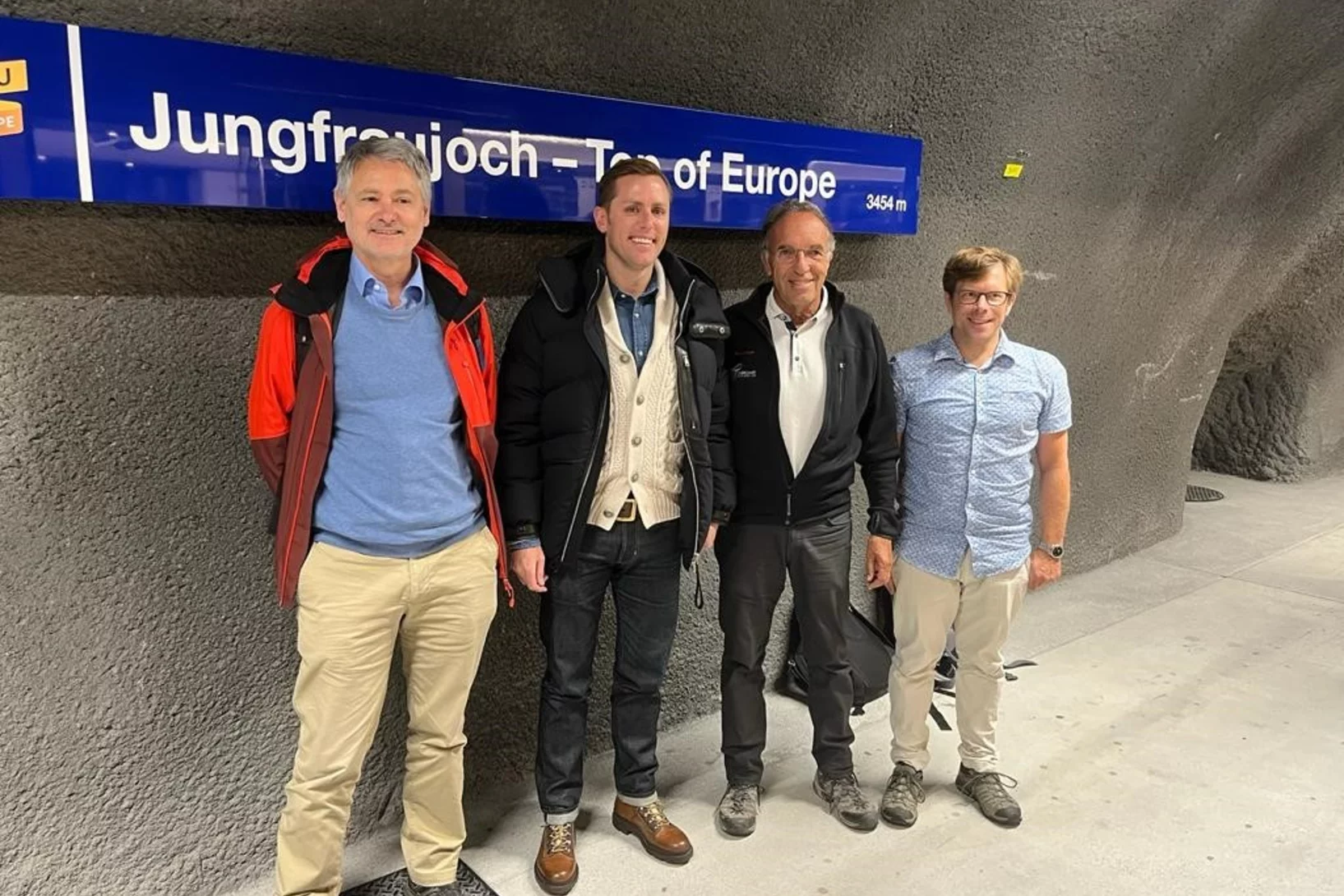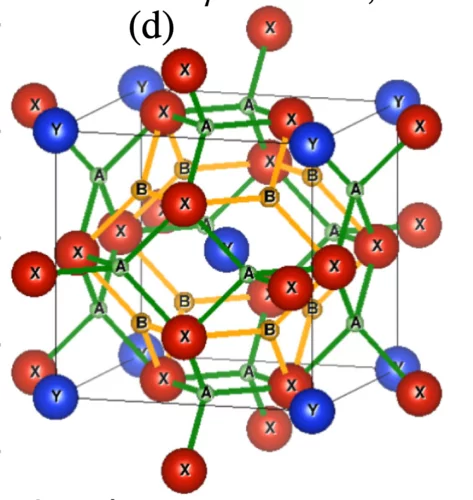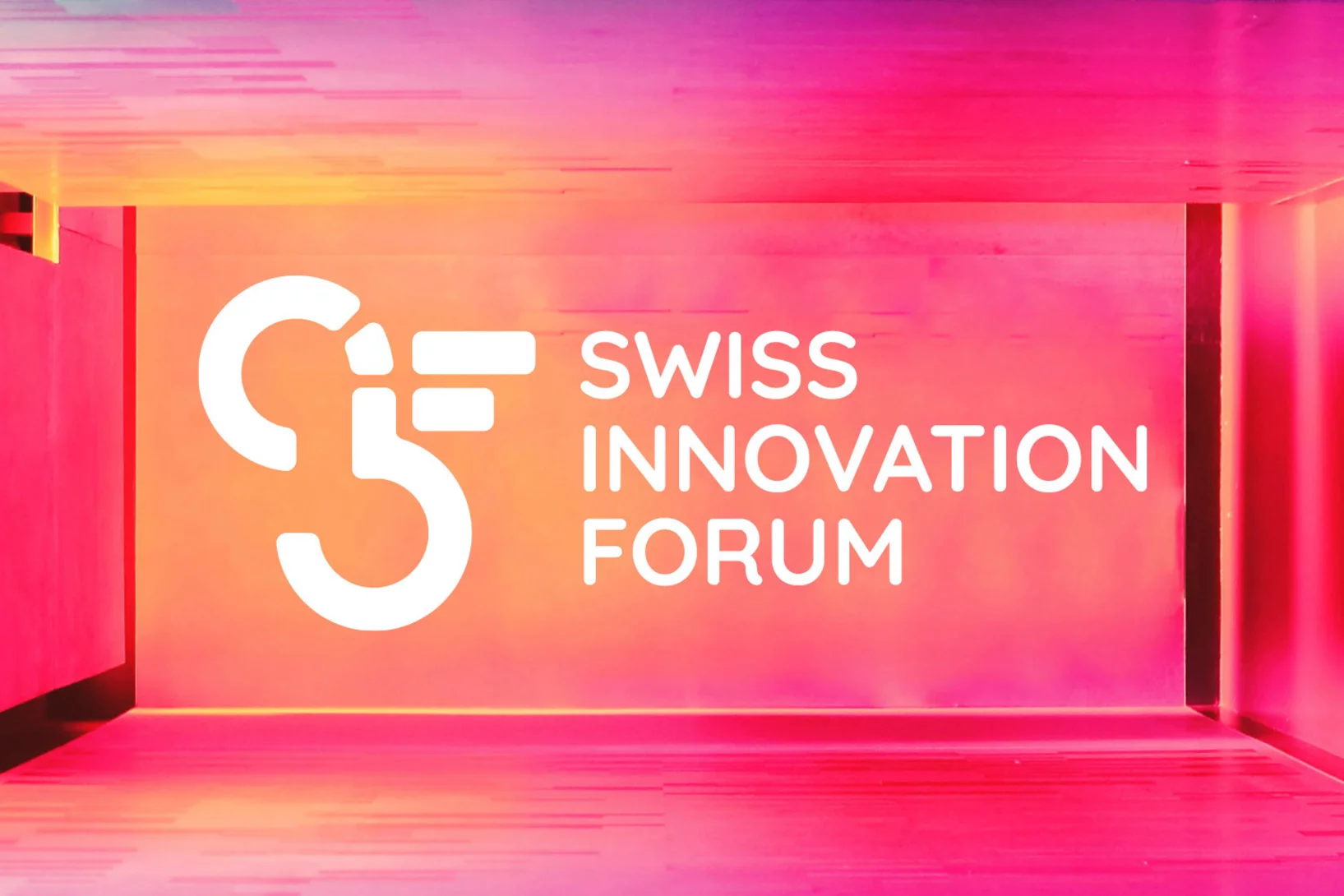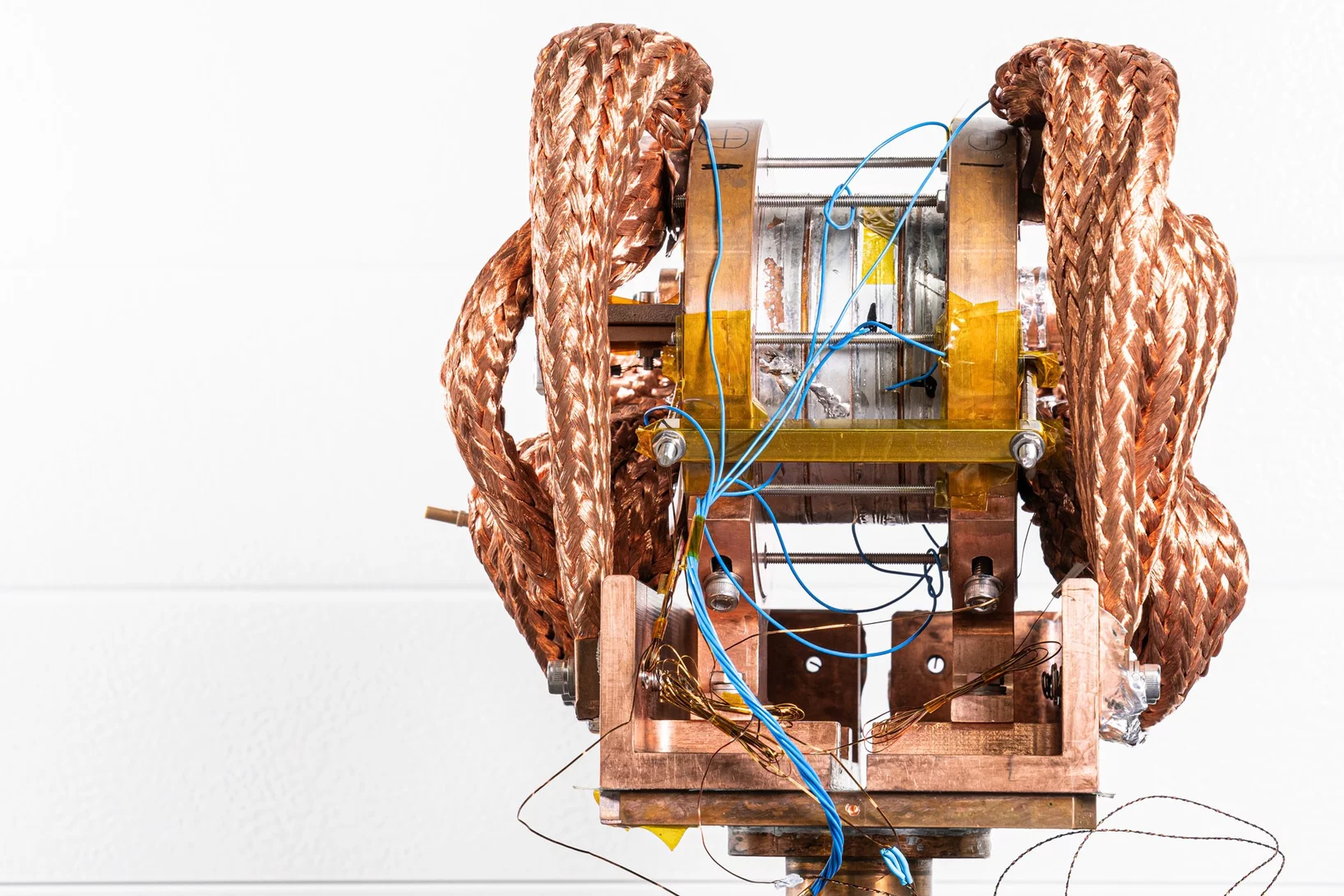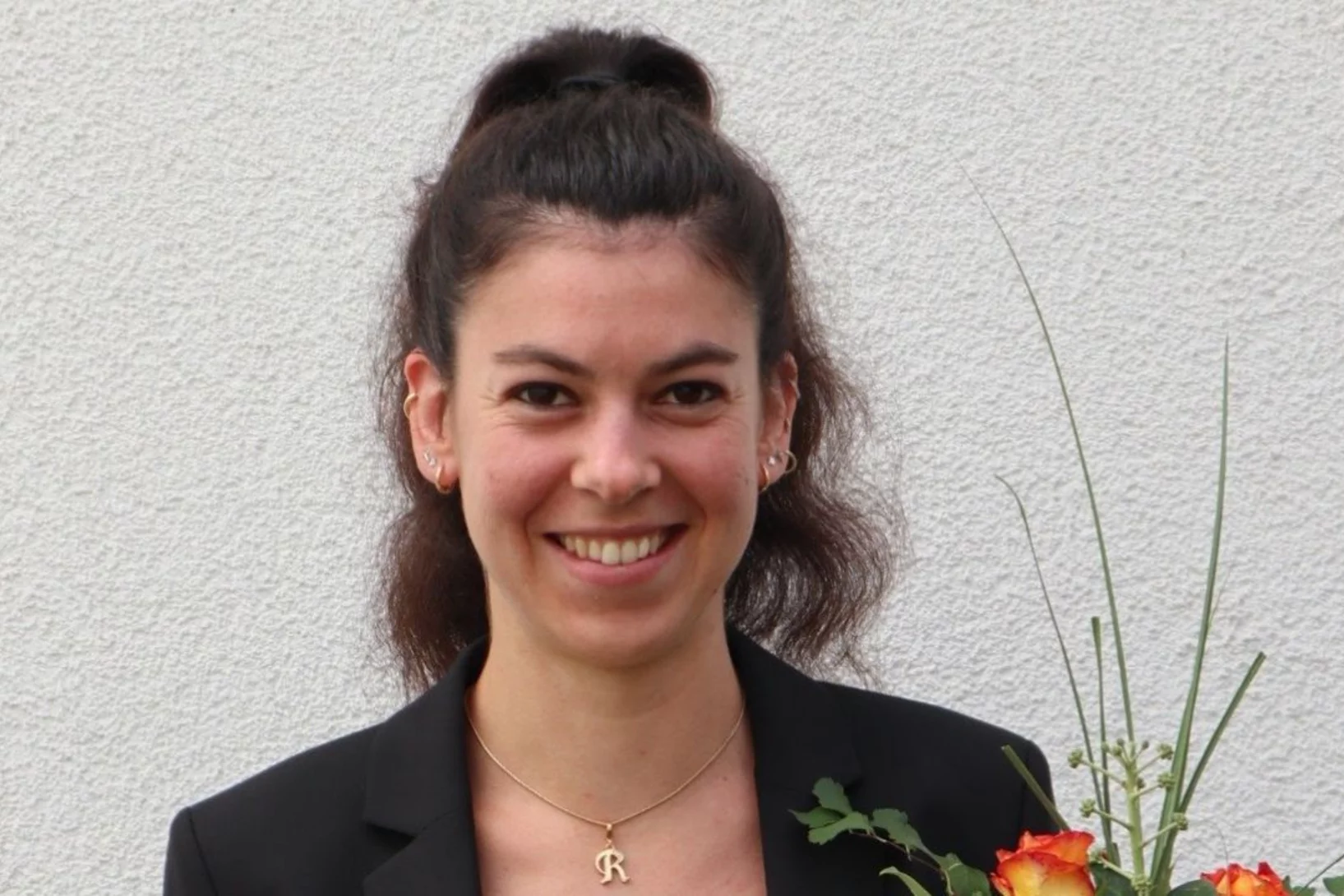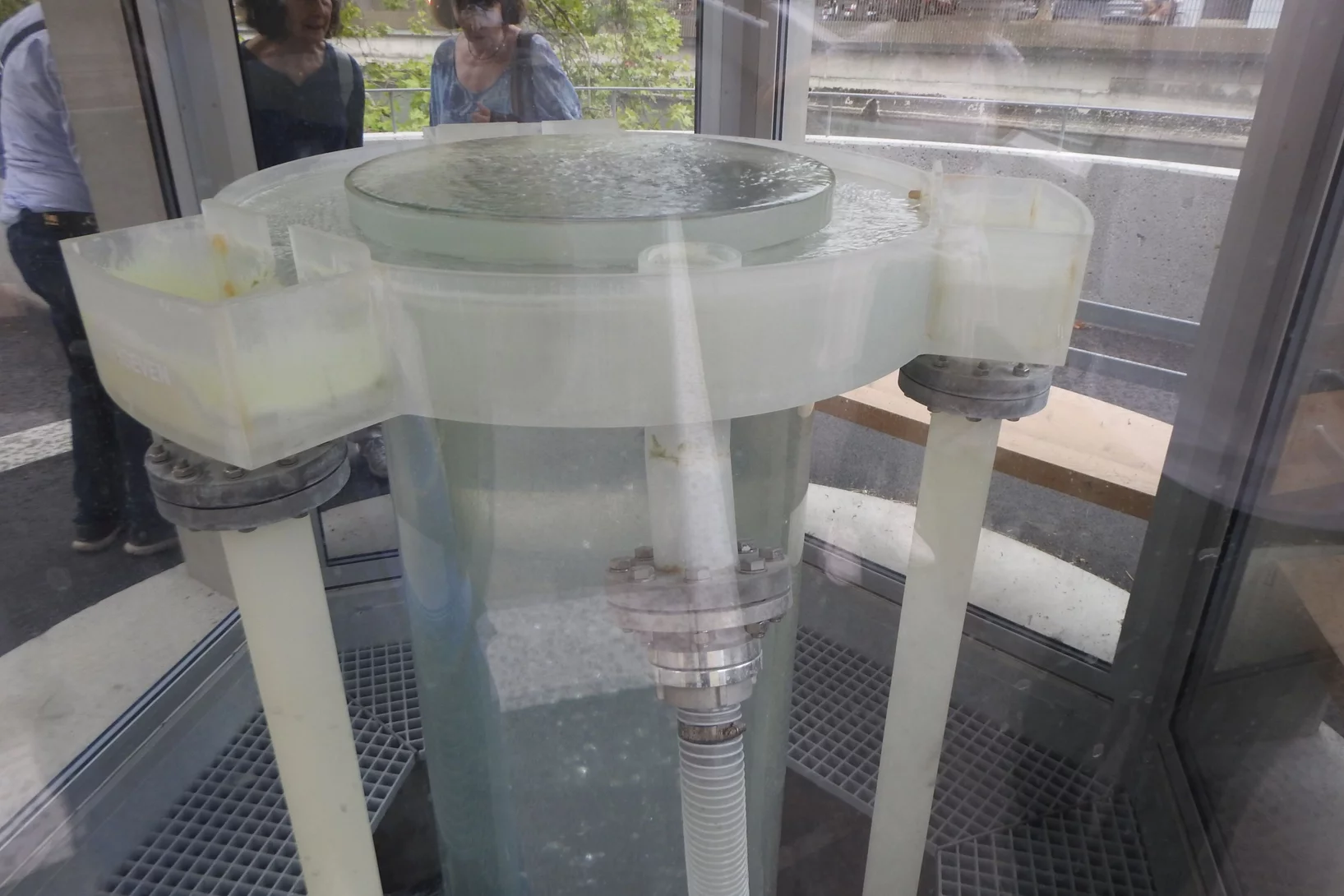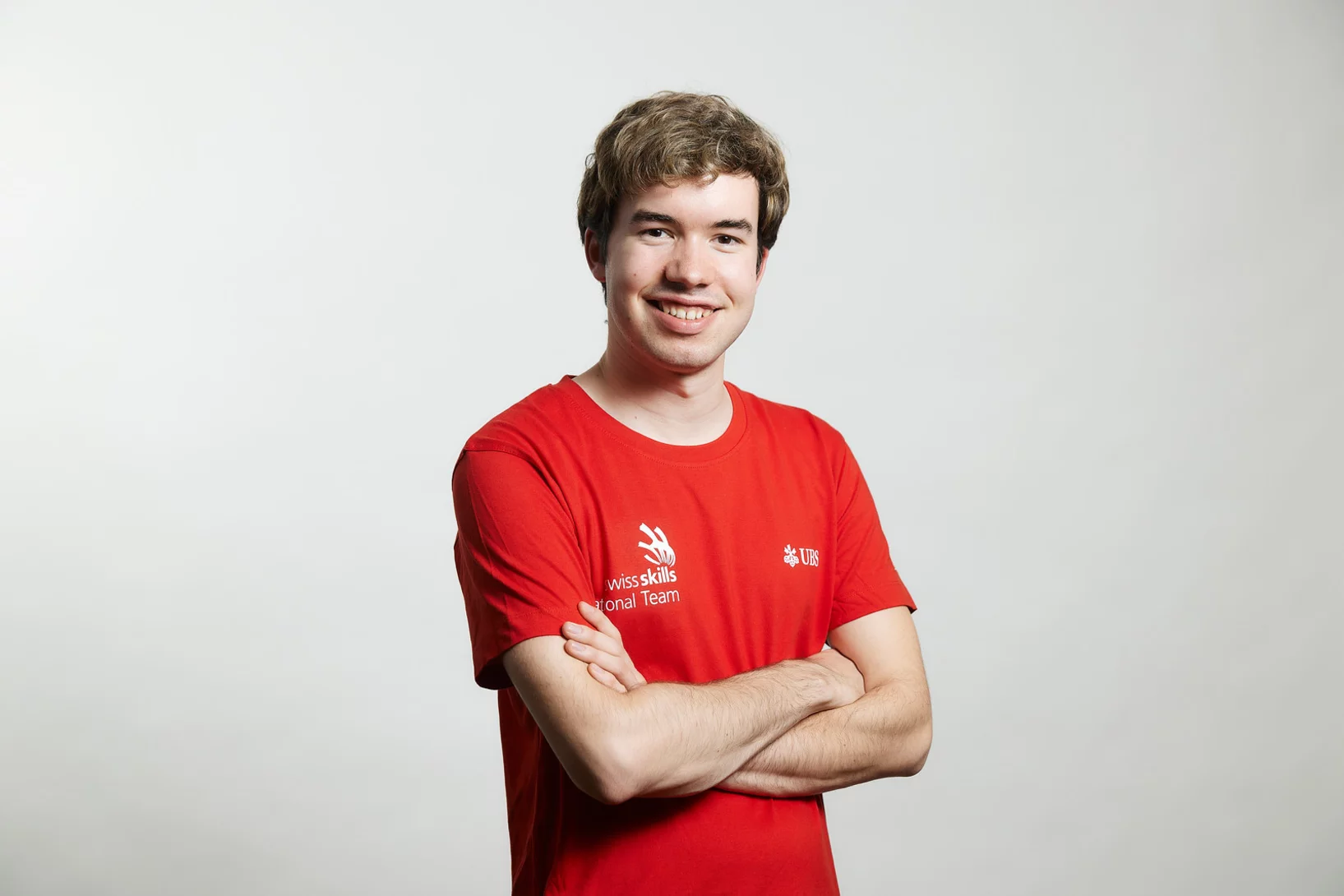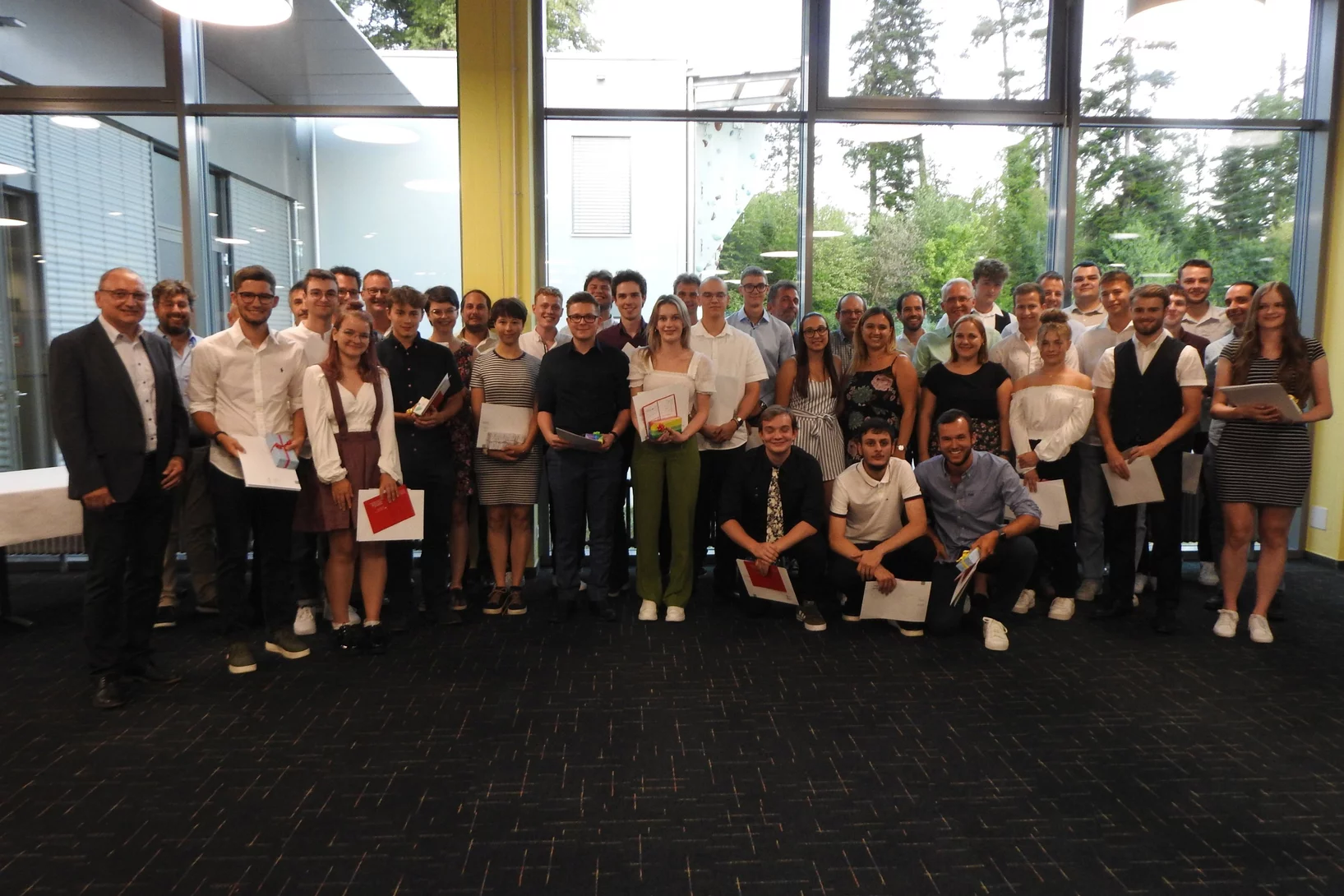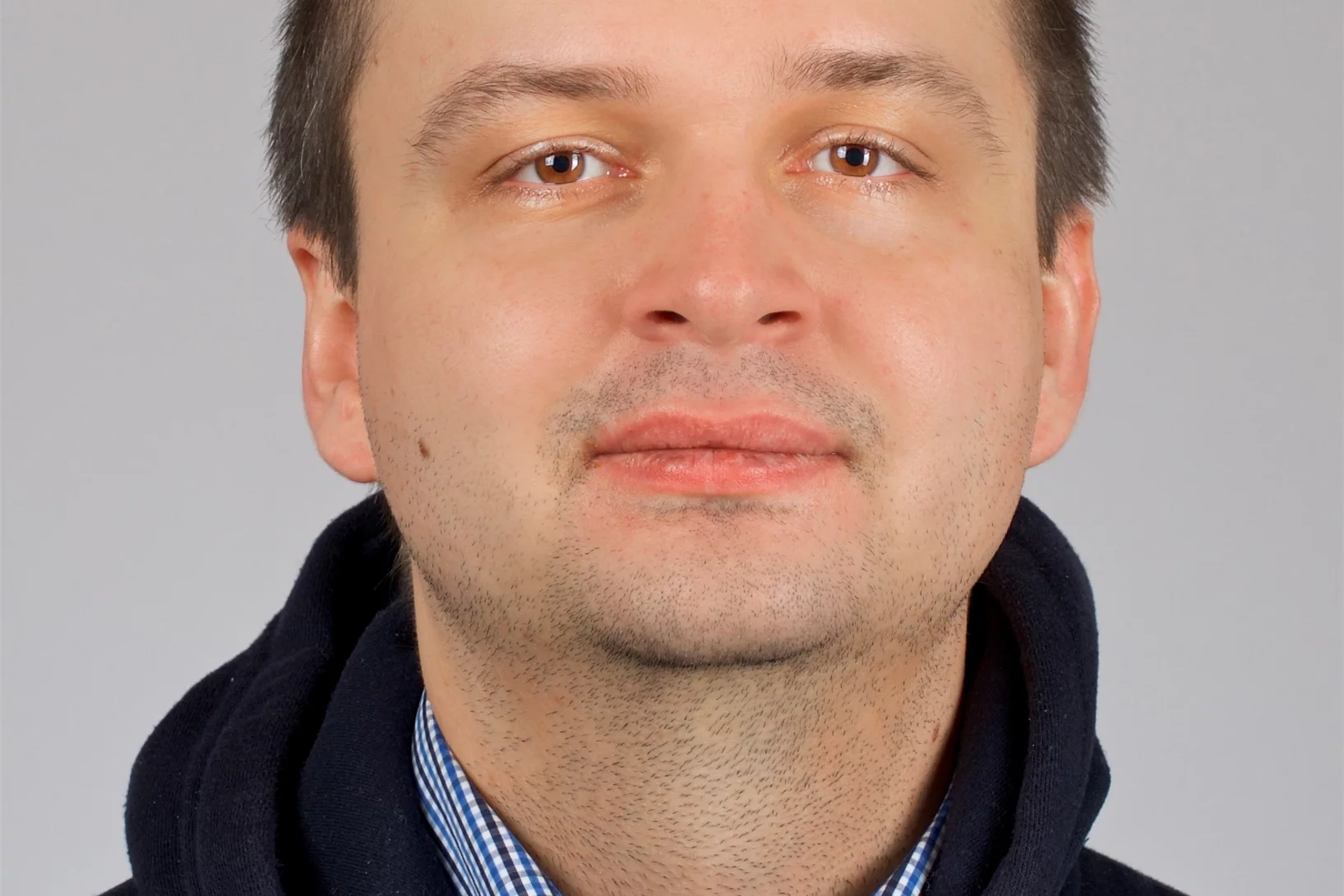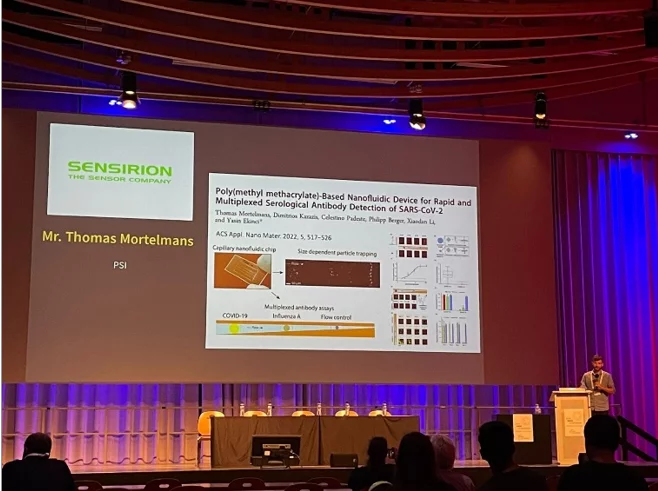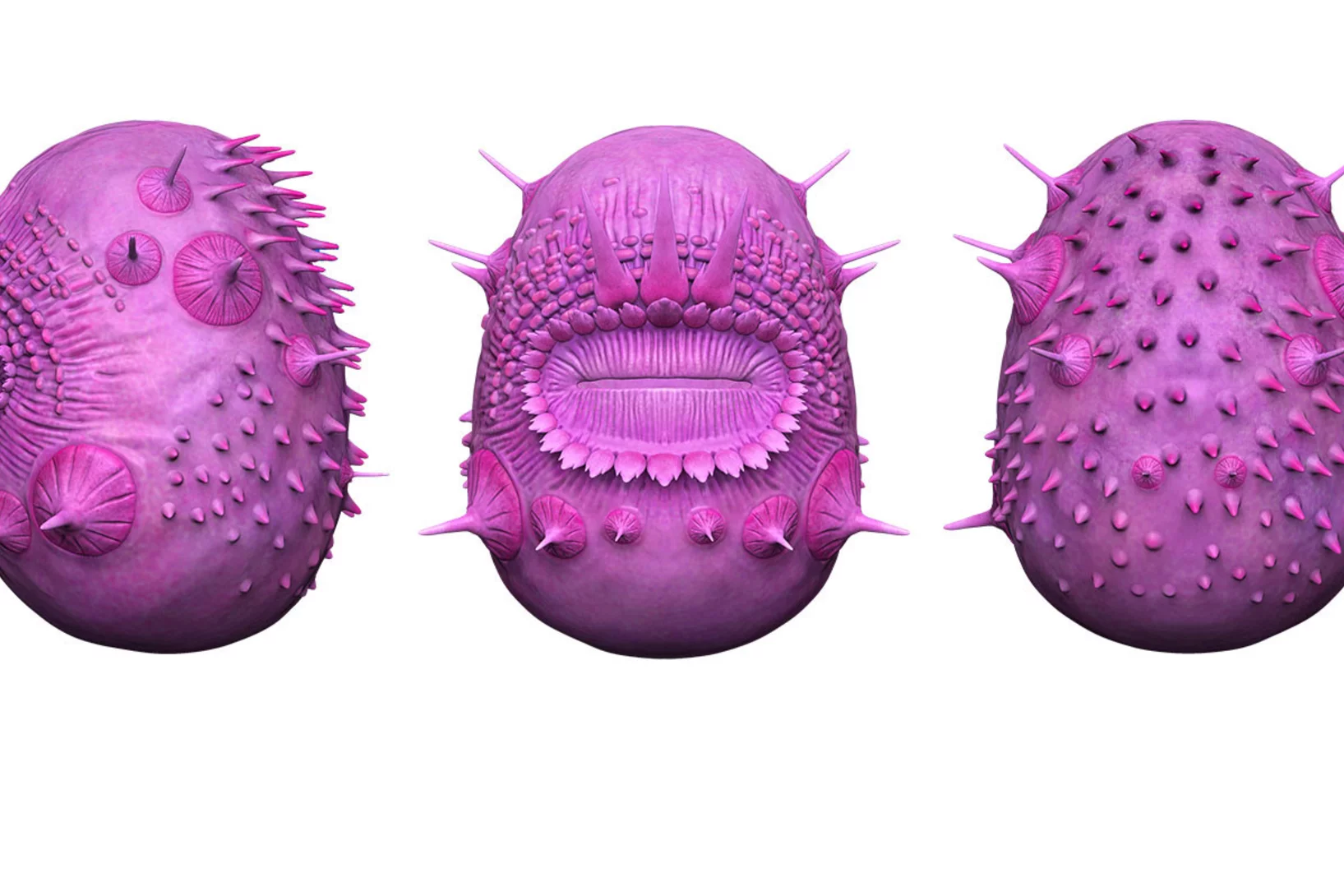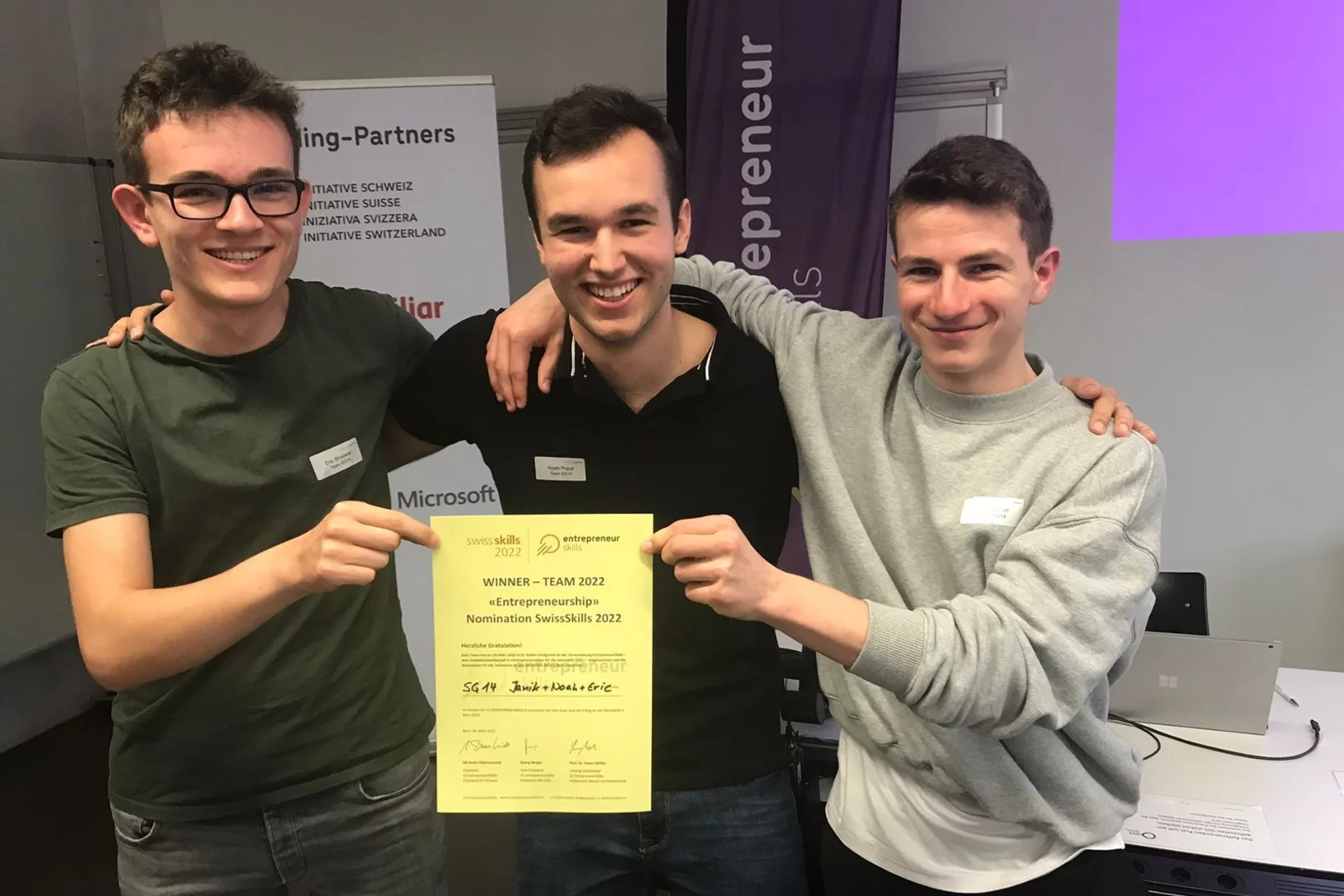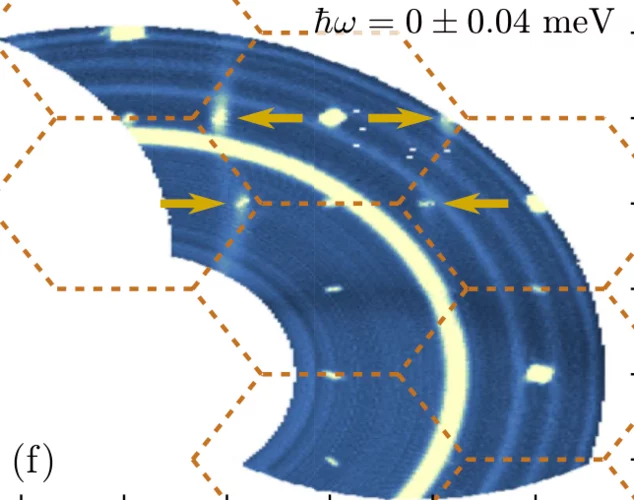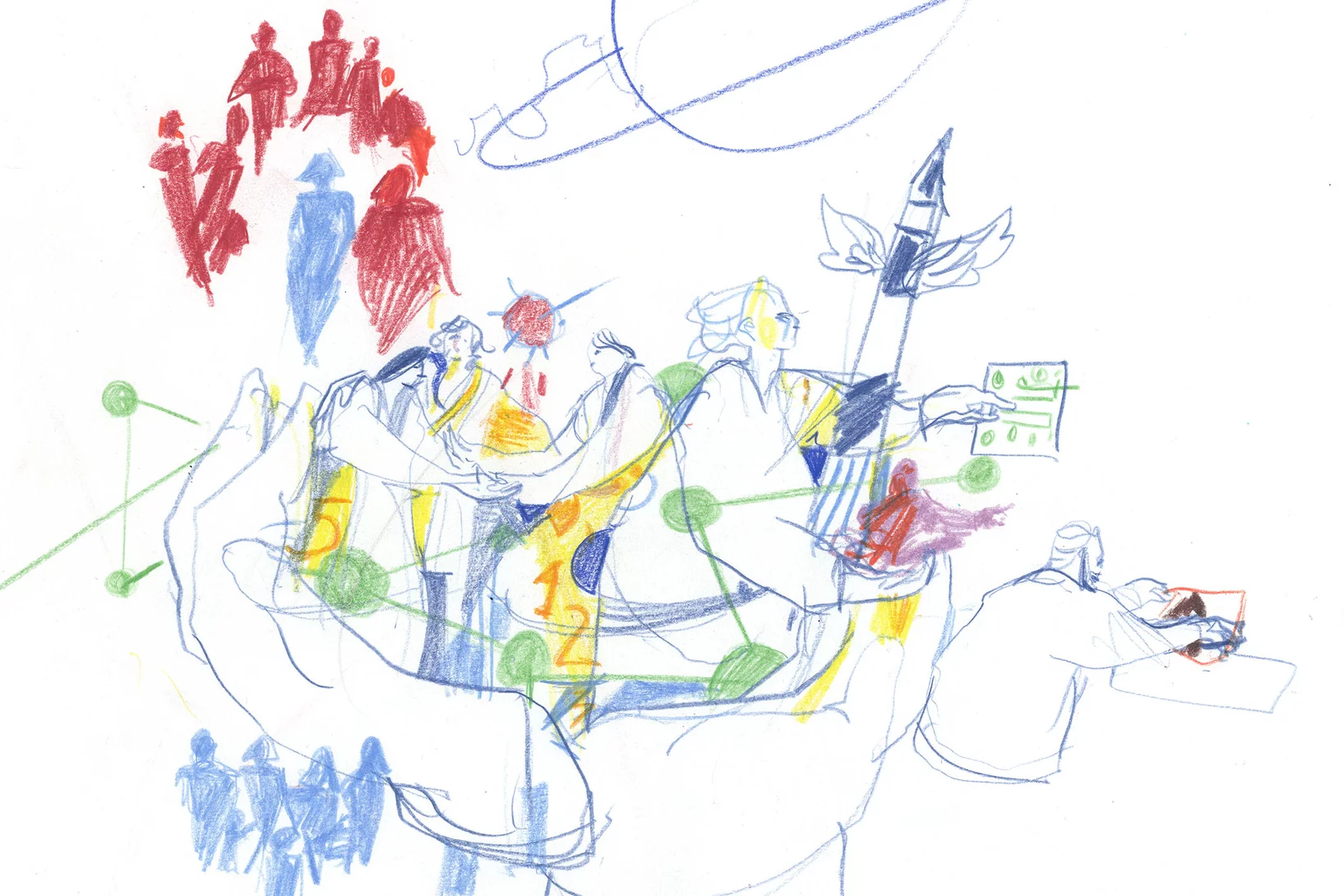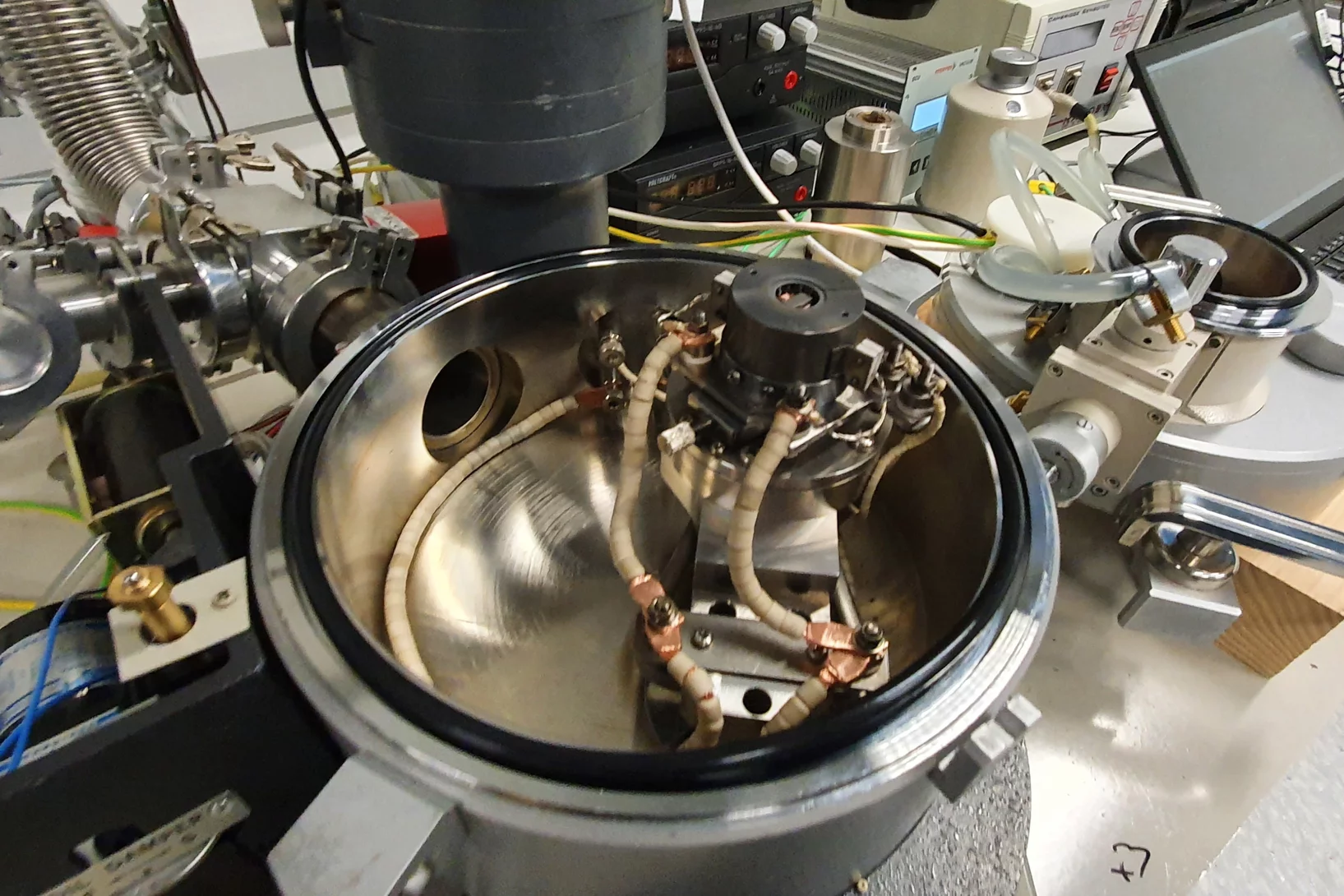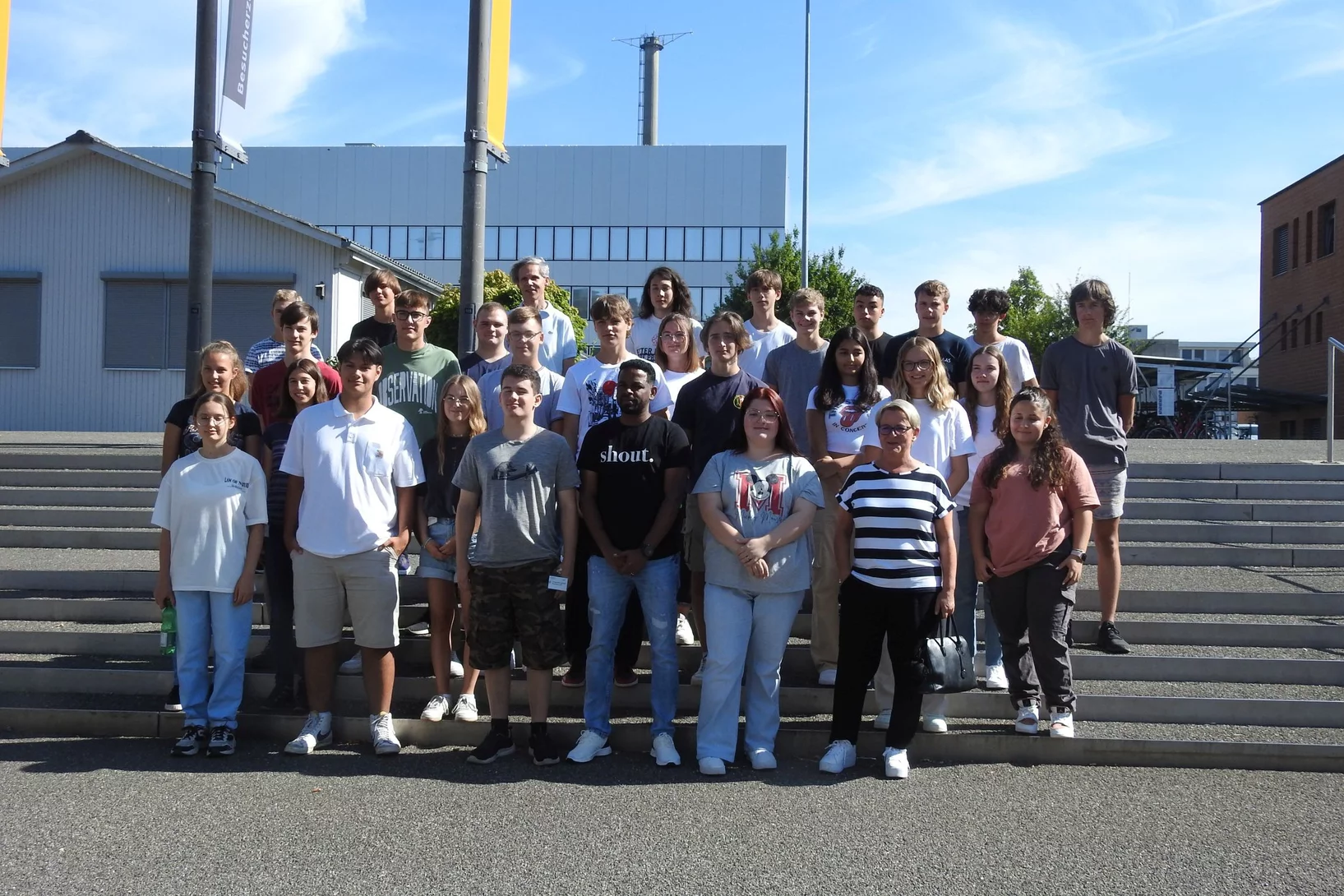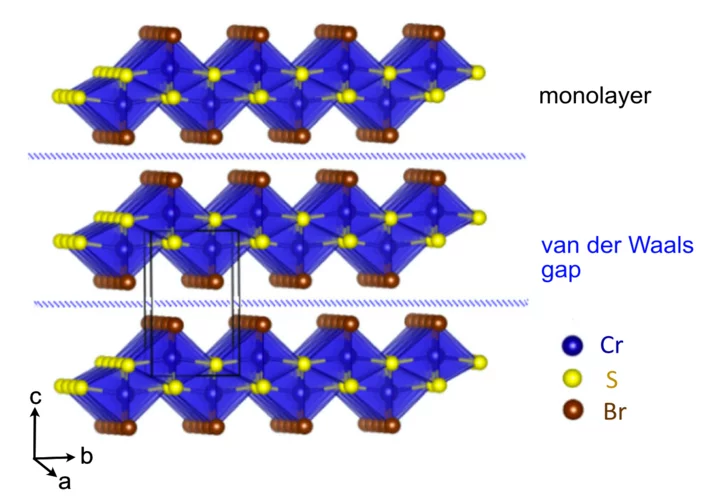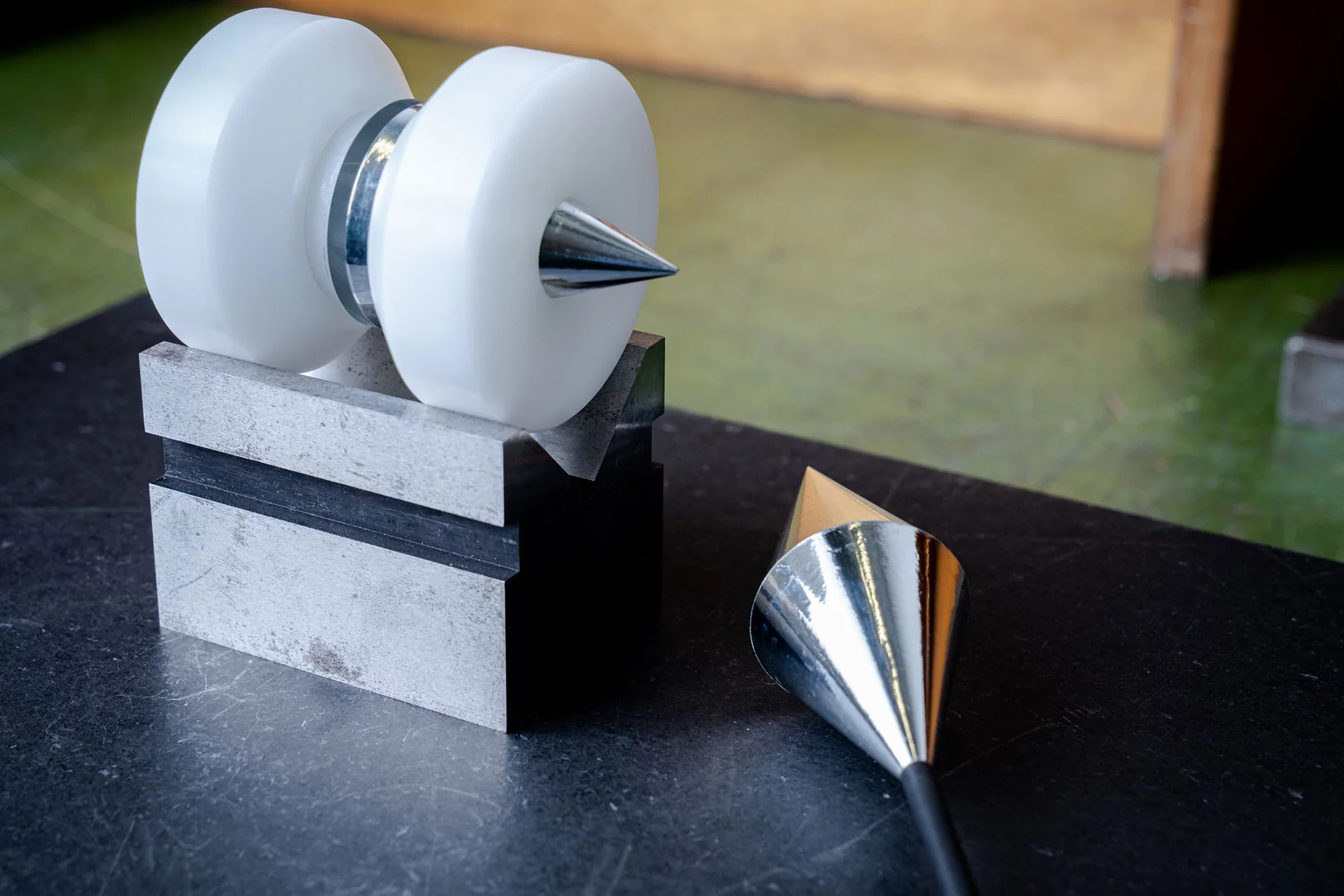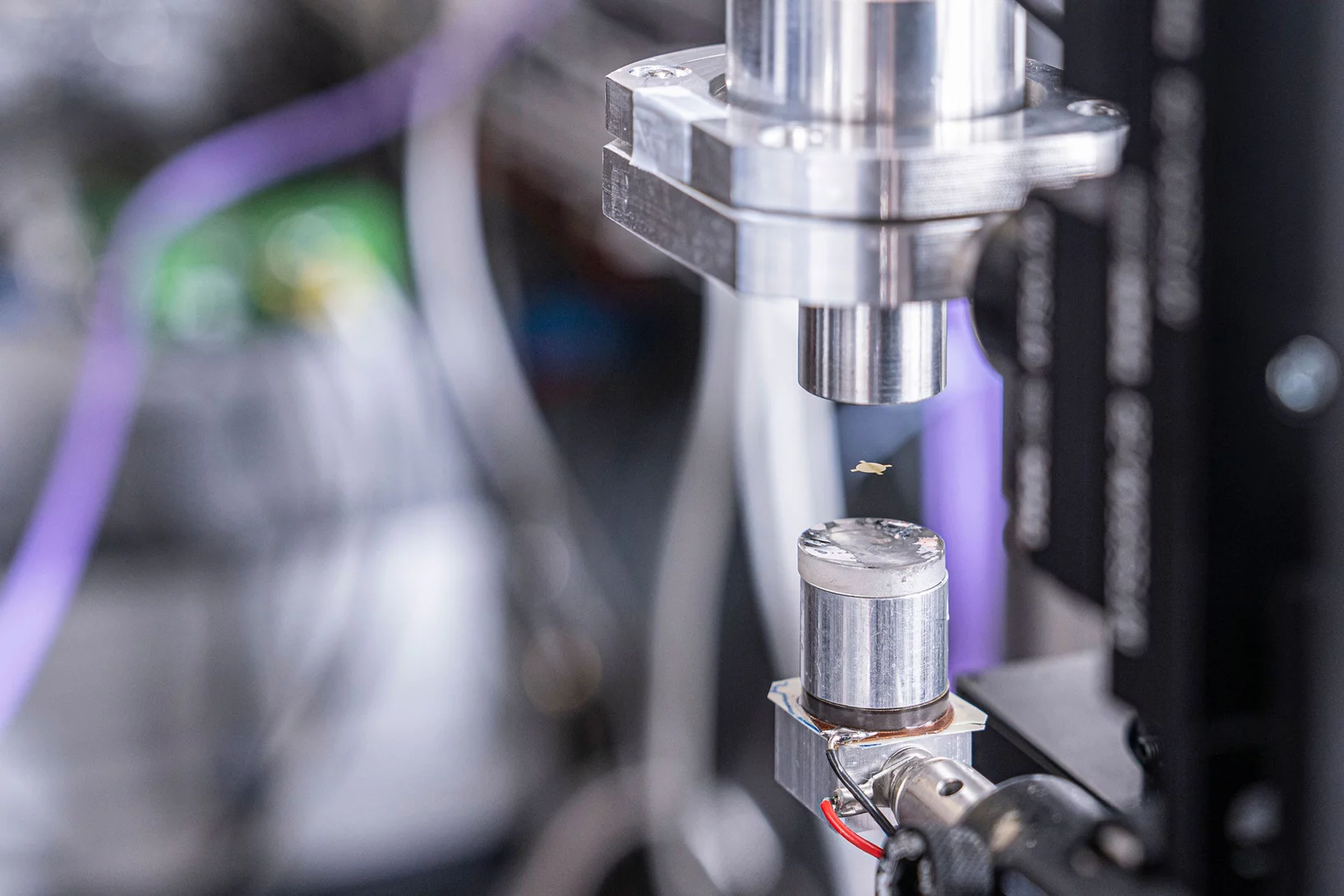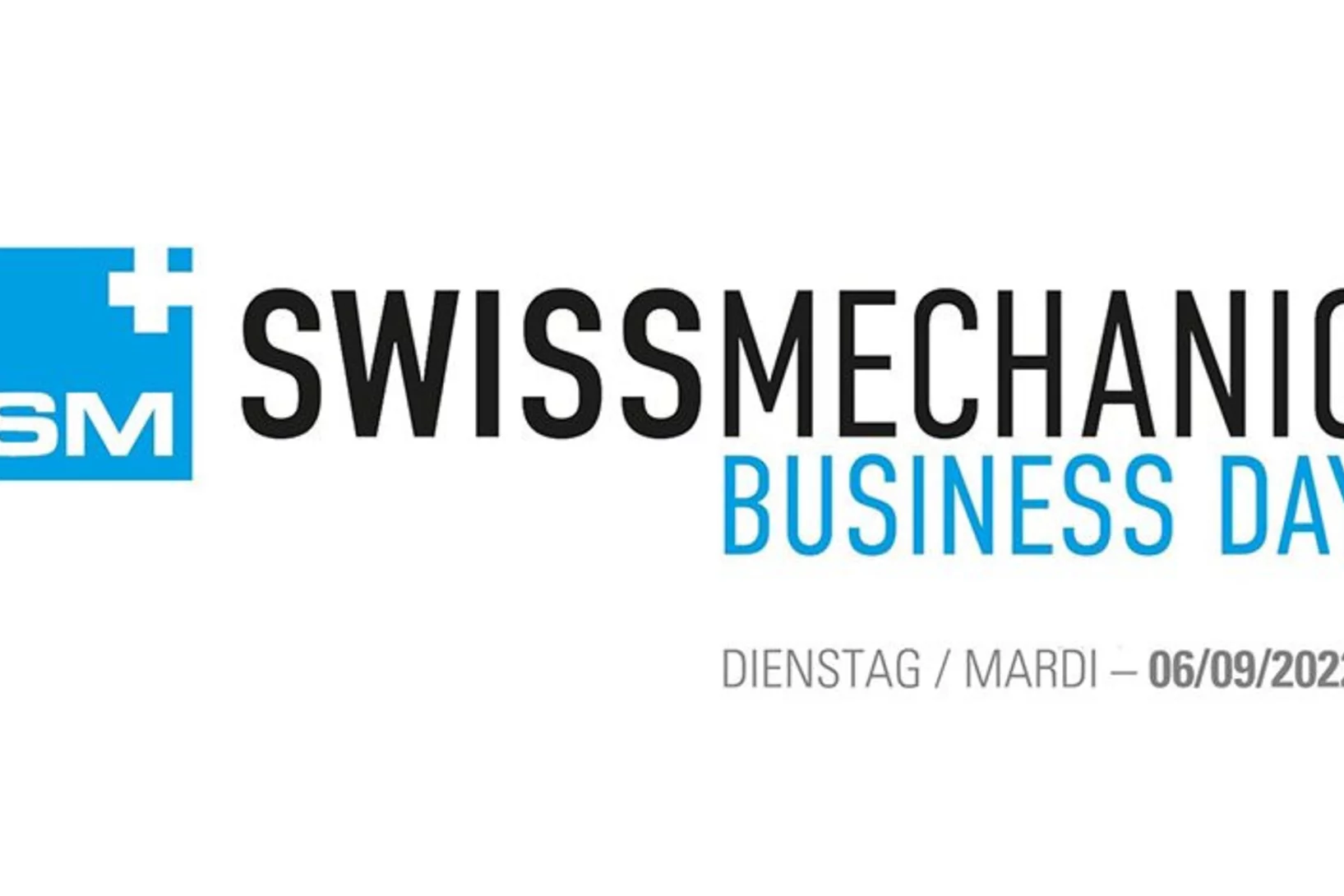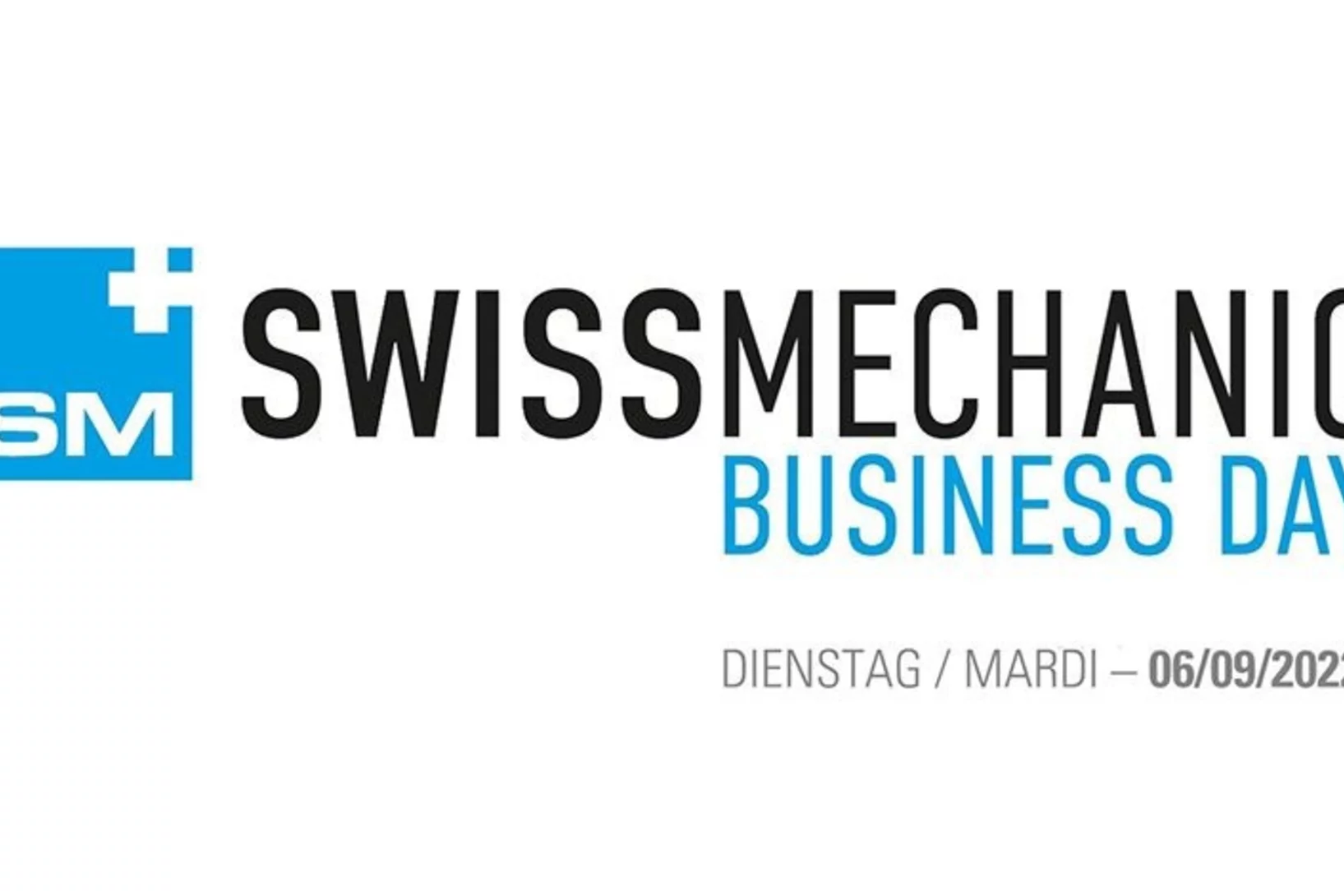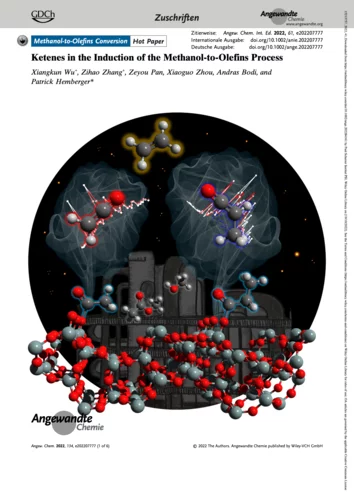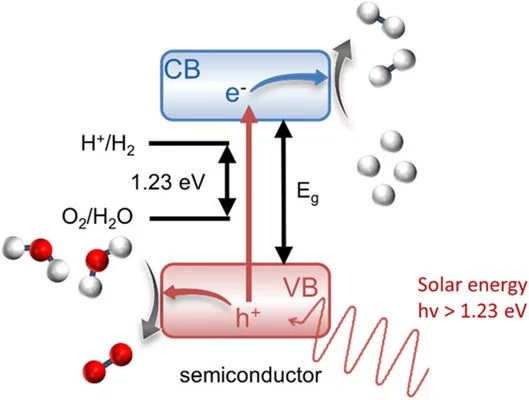Prize from International Society for muSR Spectroscopy
PhD student of the E-QuP group Charles Mielke III receives the Prize for best Young Scientist Talk at the 15th International Conference on Muon Spin Spectroscopy.
Welcome to Luca Longetti!
We warmly welcome Luca Longetti to the Laboratory of Environmental Chemistry.
Cashlessly money upload of PSI badge
It is now possible to upload your PSI badge cashless directly with your credit card. The respective machine is located in the entrance area of the PSI restaurant OASE.
SwissSkills 2022
Reicht es für eine Medaille oder ein Diplom?
The Effects of Hydrophobicity Treatment of Gas Diffusion Layer on Ice Crystallization in PEFCs
Water management is crucial to the successful cold-start in polymer electrolyte fuel cells (PEFCs). The sudden freeze of supercooled water blocks the reactant gas in the cathode and causes rapid voltage failure. In this work, we statistically evaluated the effects of the gas diffusion layer (GDL) substrate, size, saturation, and the coating loads and methods of hydrophobic polymer on the freezing probability of supercooled water by differential scanning calorimetry (DSC).
High-ranking visitor on the Jungfraujoch Research Station
On Friday 19th of August, US Ambassador to the Swiss confederation Scott Miller visited the Jungfraujoch, where PSI scientists conduct research at 3580 meters above sea level.
Entanglement between Muon and I > 1/2 Nuclear Spins as a Probe of Charge Environment
We report on the first example of quantum coherence between the spins of muons and quadrupolar nuclei. We reveal that these entangled states are highly sensitive to a local charge environment and thus, can be deployed as a functional quantum sensor of that environment. The quantum coherence effect was observed in vanadium intermetallic compounds which adopt the A15 crystal structure, and whose members include all technologically pertinent superconductors. Furthermore ...
PSI am diesjährigen Swiss Innovation Forum in Basel
Austausch, Inspiration und neue Denkweisen können einen wesentlichen Beitrag zu Innovationen leisten. Das Swiss Innovation Forum (SIF) 2022 vereint dies an einem Ort - deshalb unterstützen wir als PSI die diesjährige Ausgabe des SIF als Partner.
Am 23. November treffen sich motivierte Start-ups, engagierte Investorinnen und mutige Ideengeber im Congress Centre Basel. Im branchenübergreifenden Austausch entwickeln sie neue Ideen, um die Schweizer Innovationslandschaft voranzutreiben.
Highlights des Programms:
💡 Keynotes von Tricia Wang (Gründer, Sudden Compass), Dr. Prof. Heino Falcke (Astronom), Miriam Meckel (HSG-Professorin), Marc Gläser (CEO, Stöckli) und vielen mehr.
💡 Verleihung des Swiss Technology Award 2022, dem bedeutendsten Technologiepreis der Schweiz.
💡 Experience Zone mit spannenden Cases aus dem Innovationsland Schweiz.
Das PSI ist mit dabei – besuchen Sie uns an unserem Stand in der FutureExpo und erfahren Sie mehr über die Energieforschung am PSI und unsere Ideen für nachhaltige Treibstoffe und Gase, Dekarbonisierung und gegen Strommangellagen.
Detaillierte Informationen und Anmeldung zur Konferenz unter www.swiss-innovation.com
Stronger magnets, faster particles, new physics.
Probing the very smallest building blocks of matter requires big experiments. That is why physicists built an 18 Tesla high temperature superconducting magnet.
Poster Prize 2022: First Prize (AKB Foundation) of the SAPhW Poster Award at the Swiss Pharma Science Day 2022
Rahel Wallimann, PhD student in the “Nuclide Chemistry Group”, received the first prize (AKB Foundation) of the SAPhW Poster Award at the Swiss Pharma Science Day 2022.
Berufsbildnerabend 2022
1 Million Liter Wasser sprudelt jeden Tag aus den vielen Thermalquellen im Bäderquartier in Baden
WorldSkills 2022
Vom 19. - 22. Oktober 2022 drücken wir Mario Liechti (ehem. Lernender) im Beruf des Elektroniker EFZ beide Daumen!
Lehrabschlussfeier 2022
Bei schönstem Wetter feierten wir unsere 27 neuen Berufsleute.
Doctoral thesis award 2022 for Igor Plokhikh
Doctoral thesis award of the Dr. Alfons Paulus Foundation at the University of Regensburg, Faculty of Chemistry and Pharmacy for Igor Plokhikh
On 14th of July 2022 Dr Igor Plokhikh (currently postdoc at SSCG, LMX PSI) has been awarded with the Doctoral thesis award of the Dr. Alfons Paulus Foundation at the University of Regensburg, Faculty of Chemistry and Pharmacy. He completed his doctoral studies at the group of Prof. Arno Pfitzner working on synthesis, crystal growth and characterization of crystal and magnetic structures of new magnetic Eu2+-containing compounds. This work resulted in discovery of over 10 new compounds, some of which exhibit complex magnetic phase diagrams.
Thomas Mortelmans receives the Swiss Nanotechnology PhD award
Thomas Mortelmans has been a PhD at the Laboratory for X-ray Nanosciences and Technologies for the last four years. He recently defended his PhD-thesis at the University of Basel entitled: "The development of a nanofluidic particle size sorter and its biomedical sciences" and was awarded the grade of summa cum laude.
Un curieux fossile qui n’est pas notre ancêtre
La lumière de type rayons X résout un des mystères de l’ascendance humaine
(++Ausschreibung beendet++) Diversity Award 2022
Ab sofort können Teammitglieder ihre Führungskraft für den Diversity Award 2022 nominieren!
SwissSkills: PSI-Team mit im Rennen
Bei den diesjährigen «SwissSkills», die im September in Bern ausgetragen werden, wird erstmalig ein Wettkampf für junge Berufsleute mit unternehmerischem Denken durchgeführt. Das Thema Entrepreneurship soll im Rahmen der Bildungsprogramme mehr und mehr berücksichtigt werden, um Eigeninitiative und das Unternehmertum zu fördern.
Das PSI-Team, bestehend aus dem Elektronikern Eric Brouwer, Noah Piqué und dem Informatiker Janik Meier wurde für die Wettkampfdisziplin «Entrepreneurship» an den SwissSkills 2022 nominiert. Wir drücken dem Team fest die Daumen für den anstehenden Wettbewerb, wo es nicht primär um Fachwissen, sondern um Kreativität und eigene Ideen geht.
Mehr Informationen unter:
www.entrepreneurskills.ch
Spin Density Wave versus Fractional Magnetization Plateau in a Triangular Antiferromagnet
We report an excellent realization of the highly nonclassical incommensurate spin-density wave (SDW) state in the quantum frustrated antiferromagnetic insulator Cs2CoBr4. In contrast to the well-known Ising spin chain case, here the SDW is stabilized by virtue of competing planar in-chain anisotropies and frustrated interchain exchange.
Connecting Women in Physics
Through role models and networking, the first “Women in Physics Career Symposium” helps early career researchers stay in physics
Hydrogen-induced softening effect in zirconium alloys
The fuel used for nuclear energy production is normally enclosed in zirconium-based cladding tubes that constitute the first barrier between the radioactive material and the environment. In water-moderated reactors, cladding tubes tend to corrode, generating hydrogen as side product. The study of the hydrogen embrittlement in zirconium alloys is of high relevance for the industry.
Depending on temperature, local hydrogen concentration, and local stress conditions, different hydrogen-induced embrittlement mechanisms can be active in the cladding material: in certain conditions hydrogen in solid solution might cause material softening through a mechanism known as hydrogen enhanced localized plasticity (HELP).
With the goal of determining the conditions necessary to activate the HELP effect in zirconium alloys, samples have been evaluated by different micro-mechanical and macro-mechanical techniques. Results highlight the importance of the interplay between solid solution hydrogen and hydrides on the hardness and yield point of the tested materials.
Einführungswoche 2022
Ohne Masken, eine ganz normale Einführungswoche.
Dynamic magnetic crossover at the origin of the hidden-order in van der Waals antiferromagnet CrSBr
The van-der-Waals material CrSBr stands out as a promising two-dimensional magnet. Here, we report on its detailed magnetic and structural character- istics. We evidence that it undergoes a transition to an A-type anti- ferromagnetic state below TN ≈ 140 K with a pronounced two-dimensional character, preceded by ferromagnetic correlations within the monolayers. Furthermore, we unravel the low-temperature hidden-order within the long- range magnetically-ordered state. We find that it is associated to a slowing down of the magnetic fluctuations, accompanied by a continuous reorienta- tion of the internal field.
Faits maison
Les ateliers du PSI fabriquent d’innombrables pièces et composants pour des expériences scientifiques complexes.
A new spin on sample delivery for membrane proteins
Proteins hover in front of the X-ray beam at a Swiss Light Source beamline. Now, spinning thin films bring on board these trickiest of proteins.
IMPACT on track
IMPACT was awarded the highest ranking in the SNSF evaluation.
PSI am Swissmechanic Business Day 2022
"ENERGIE - Geht der Schweiz der Strom aus?"
Wann: 6. September 2022, 9 Uhr - 18 Uhr
Wo: Halle 622 Zürich-Oerlikon
Am Swissmechanic Business Day zeigen verschiedene renommierte Referenten Perspektiven zum Thema "ENERGIE - Geht der Schweiz der Strom aus?" auf. Auch das PSI ist mit Fachexperten an einem Stand vertreten. Es werden Innovationen und Produkte ausgestellt, unter anderem der ESI Cube des Paul Scherrer Instituts - ein mobiles Exponat der Versuchsplattform «Energy System Integration», welches Forschungs- und Industrie-Partnern zur Verfügung steht. Der Cube macht das komplexe Thema Energiespeicherung und –Umwandlung auf spielerische Art und Weise verständlich.
Entscheidungsträger aus der Industrie treffen sich, um die Fachvorträge zu hören und sich über die neuesten Produkte und Innovationen zu informieren.
Der Business Day ist eine hervorragende Gelegenheit, sich über hochrelevante und aktuelle Themen wie der Sicherung der Schweizer Energieversorgung in den kommenden Jahren oder die Sicherheit der Kernenergie zu informieren. Nutzen Sie diese Gelegenheit zum Netzwerken und nehmen Sie teil!
Mehr Informationen zum detaillierten Programm, zu den Referenten und zur Anmeldung finden Sie hier:
https://www.swissmechanic.ch/business-day
Deadline für die Anmeldung: 16. August 2022
PSI at the Swissmechanic Business Day
When: 6. September 2022, 9am - 6pm
Where: Halle 622 Zürich-Oerlikon
Topic: «ENERGIE – Geht der Schweiz der Strom aus?»
Language: German
On the Swissmechanic Business Day various renowned speakers offer perspectives from on the topic "ENERGY - Is Switzerland running out of electricity?". Innovations and products will be exhibited, including the Paul Scherrer Institute's ESI Cube - a mobile exhibit of the "Energy System Integration" experimental platform, which is available to research and industry partners. The Cube makes the complex topic of energy storage and conversion comprehensible in a playful way.
Finding Ketenes in the Methanol to Olefins Process
How are the first olefins formed in the early stages of the methanol-to-olefins process? Detection of two reactive ketene species solves this long-standing puzzle.
Thin-Film Oxynitride Photocatalysts for Solar Hydrogen Generation: Separating Surface and Bulk Effects Using Synchrotron X-Ray and Neutron-Based Techniques
The conversion of solar light into hydrogen by photoelectrochemical water splitting is one of the potential strategies that can allow the development of a carbon-neutral energy cycle. Oxynitride semiconductors are promising materials for this application, although important limitations must still to be addressed. One of the most important issues is physicochemical degradation of the semiconductor, at the interface with water, where the electrochemical reactions occur. In this regard, thin films, with well-defined and atomically flat surfaces, are invaluable tools for characterizing material properties and degradation mechanisms, while identifying strategies to mitigate detrimental effects. Thin oxynitride films may allow the use of complementary characterizations, not applicable to conventional powder samples. In particular, the study of the solid–liquid interface can benefit enormously from the use of thin films for synchrotron-based surface-sensitive X-Ray scattering methods and neutron reflectometry. These investigation approaches promise to speed up the design and discovery of new materials for the production of solar fuels, while paving the way for similar applications in other research fields. This work aims at reviewing the literature contributions on oxynitride thin films for solar water splitting summarizing what is learnt so far and suggesting experimental strategies to unveil what is still not clear.

